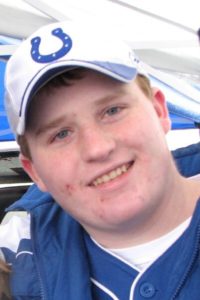In this Podcast with PPAHS, Pamela Parker, BSN, RN, CAPA describes her son, Logan, as “a red haired, fair skinned, seventeen year old fun big kid … [who] was very silly and … even embraced the term ‘goofy’.”
Logan had obstructive sleep apnea (OSA) with elements of central sleep apnea. He underwent surgery to have “his tonsils and his uvula removed, septum and his turbinate repaired. Basically, opening up the airway by removing the tissue in the back of his airway.”
On July 23, 2007, 17-year old Logan died after successfully undergoing routine surgery to correct his sleep apnea.

The Joint Commission in its Sentinel Event Alert Issue 49, “Safe use of opioids in hospitals” states:
The safe use of opioids in hospital settings relies on an accurate pain assessment and then applying appropriate pain management techniques.
The Joint Commission recommends factors and activities to avoid OIRD, which include:
- Screening patients for the risk of respiratory depression, including OSA;
- Using an individualized, multimodal plan to manage pain; and
- Taking extra precautions with patients who are opioid naive.
In an interview with the Physician-Patient Alliance for Health & Safety (PPAHS), Ms. Parker, who is a recovery room nurse and a certified ambulatory perianesthesia (CAPA) nurse, discusses her efforts to resuscitate her own son from opioid-induced respiratory depression (OIRD).
Logan’s surgery was successful. In the recovery room, he “received IV morphine. Two milligrams administered at 12:50, again at 12:53, and again at 13:10. His IV was removed eight minutes later and he was discharged at 13:25, just fifteen minutes after his last dose of morphine.”
In her interview, Ms. Parker points out two clinical tools not used during Logan’s recovery:
- Sedation Scale – “There was not any scoring tool used to track his level of sedation during his recovery period. The surgery center only used the Alrdete Score during his anesthesia recovery period. And in reality Logan died in 2007 prior to the common use of the Pasero Opioid Induced Sedation Scale.
- Capnography – “There was no capnography monitoring in the recovery room and no record that it was ever checked again. So, current respiratory monitoring systems available for prevention of secondary cardiac issues. are pulse oximetry and capnography monitoring. Pulse oximetry measures the oxygenation of blood and it is widely used. However, pulse oximetry is a lagging indicator to detect fatigue and respiratory compromise. Capnography measures the amount of carbon dioxide in exhaled breath and is a better indicator of the adequacy of the ventilation of the patient.”
As a nurse, Ms. Parker says that there are 6 lessons she learned from Logan’s death:
Lesson 1
All patients receiving opioids should be assessed for risk for over sedation and respiratory depression.
Lesson 2
Clinicians must recognize the signs of respiratory compromise.
Lesson 3
All patients receiving opioids should be continuously electronically monitored.
Lesson 4
Do not rely upon pulse oximeters, monitor with capnography.
Lesson 5
All patients should be monitored for an extended period in an un-stimulated environment prior to discharge.
Lesson 6
Medical interventions should not be based upon human heroics, but should be based upon a process and process improvement.
She believes that clinicians can and must do better:
Each health care provider needs to consider the risk of respiratory compromise in planning a patient’s care, and this includes all clinicians involved in creating and implementing a plan, including the surgeon, the anesthesiologist, and the nurses. And, it should entail frequency of respiratory assessment and the types of monitors being used. Capnography should be used on all patients who are at risk for increased carbon dioxide.
Other considerations include minimal usage of medications that increase respiratory depression, such as phenergan and benadryl. Additionally, the patient should receive full reversal medications by anesthesia at the end of surgery. Clinicians must create a better plan for the at-risk patient.
I am a recovery room nurse, and yet I did not have the tools and I could not save him.
After discharge, his deterioration was already rolling down too an accelerated path.
We must do better. Screen our patients for risk. Know the signs of deterioration in a timely manner with a thorough, a thorough nursing assessment and intervene earlier. I firmly believe that the appropriate monitors have been used – specifically capnography – and if he had received additional and longer monitoring in an unstimulated environment, July 23rd of 2007 would have had a different ending.

Ms. Parker has been a registered nurse for almost 25 years. She is a recovery room nurse and works in the ambulatory procedure unit at a hospital in Indiana. In addition to providing patient care, Pamela is a clinical educator and provides bereavement support. To help others with the loss of loved ones, she writes a blog “Hope for Grieving Mothers” (http://www.holeheartedmamas.com/).
To listen to the interview with Ms. Parker on YouTube, please click here.
For a pdf transcript of the interview, please click here.